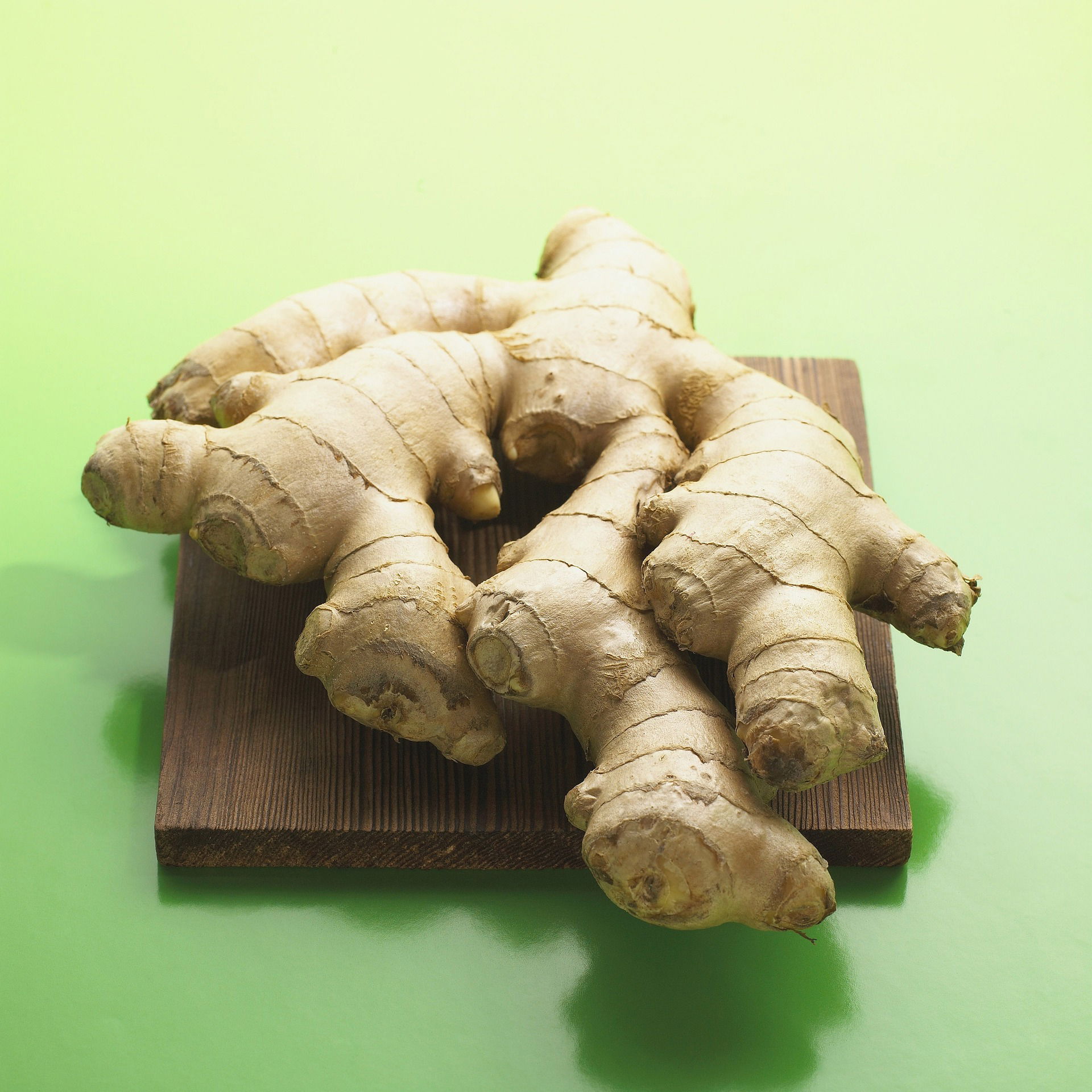We explore the importance, benefits, and best practices for storing fresh ginger in cold storage for export purposes.

Fresh ginger is an essential and highly sought-after spice used in various culinary and medicinal practices worldwide. Given its growing demand, fresh ginger is a valuable commodity for exporting countries. However, preserving the quality of fresh ginger through transport and storage can be challenging, especially for long-distance exports. One solution to this challenge is using cold storage to maintain the freshness and prolong the shelf life of fresh ginger. In this article, we explore the importance, benefits, and best practices for storing fresh ginger in cold storage for export purposes.
Introduction to Fresh Ginger Exporting
Fresh ginger is a widely used spice and a key ingredient in many cuisines around the world. Produced in countries such as Thailand, India, China, and Nigeria, it is no surprise that ginger has become one of the most exported crops globally. In this article, we will be discussing the importance of cold storage for fresh ginger preservation when exporting it to other countries.
Overview of Global Ginger Production and Consumption
According to the Food and Agriculture Organization of the United Nations (FAO), global ginger production reached over 4 million metric tons in 2019. The main producers of ginger are India, China, and Nigeria. The consumption of ginger mainly occurs in countries such as India, China, Indonesia, and Thailand, where it is a staple spice in their cuisine.
Prospects and Potential of Fresh Ginger Exporting
Fresh ginger has a great potential for export, as it is an essential ingredient in food preparation, medicine, and cosmetics. Ginger is also known for its various health benefits, such as reducing nausea and inflammation. With the increasing global demand for ginger, exporting fresh ginger can be a profitable business for farmers and exporters.

Importance of Cold Storage for Fresh Ginger Preservation
Understanding the Deterioration Process of Fresh Ginger
Fresh ginger is a perishable commodity that has a short shelf life. When stored under improper conditions, fresh ginger can spoil quickly, losing its flavor, aroma, and texture. The deterioration process of fresh ginger can be accelerated due to heat, humidity, and physical damage.
Role of Cold Storage in Preserving the Quality of Fresh Ginger
Cold storage plays a vital role in preserving the quality of fresh ginger during transport and storage. The use of low temperatures is effective in managing the humidity and reducing the rate of respiratory activity in fresh ginger. This slows down the degradation process and helps maintain the flavor, aroma, and texture of the ginger.
Factors to Consider when Storing Fresh Ginger in Cold Storage
Temperature and Humidity Control
Temperature and humidity control are essential factors to consider when storing fresh ginger in cold storage. The ideal temperature range for ginger storage is between 12°C to 16°C, with a humidity level between 60% to 70%.

Packaging and Shipping Requirements
Proper packaging and shipping requirements are crucial in preserving the quality of fresh ginger. The ginger should be packed in airtight plastic bags or cartons that allow for proper air circulation. Shipping containers should also be insulated and equipped with temperature and humidity control systems.
Quality Standards and Regulations
Exporters should adhere to quality standards and regulations set by the importing country. Compliance with the requirements can help ensure that the ginger meets the safety and quality standards of the importing country.
Benefits of Cold Storage for Fresh Ginger Exporting
Increased Shelf Life and Reduced Spoilage
The use of cold storage to store fresh ginger can increase its shelf life and reduce spoilage. Fresh ginger can be stored for up to three months under proper conditions, allowing exporters to ship and sell their products overseas efficiently.
Extended Exporting Opportunities and Access to New Markets
Exporting fresh ginger that meets the quality and safety standards of the importing country can provide access to new markets and extended exporting opportunities. This can help farmers and exporters increase their revenue and expand their businesses globally.
Improved Profit Margins and Revenue Generation
Investing in cold storage for fresh ginger preservation can lead to improved profit margins and revenue generation for farmers and exporters. This is due to the added value of providing high-quality fresh ginger that meets the demands of the importing countries.

Techniques for Maintaining Quality of Fresh Ginger in Cold Storage
Fresh ginger is a popular and highly sought-after product in the global market. However, the quality of ginger can quickly deteriorate if not stored properly. To ensure the freshness and shelf life of ginger during export, cold storage is a practical solution. Here are some effective techniques for maintaining quality of fresh ginger in cold storage:
Pre-cooling and Sorting
Before placing ginger in cold storage, it should be pre-cooled in a well-ventilated area to stabilize its internal temperature. The ginger should be sorted and properly graded to avoid contamination and ensure uniformity in size and quality. This will help prevent damage and bruising during transport and storage.
Effective Storage Practices and Equipment Maintenance
Effective storage practices are crucial to maintain the quality of ginger. The ideal temperature for storing ginger is between 12-15°C with a relative humidity of around 85-90%. Maintaining proper air circulation, cleanliness, and regular cleaning of storage equipment is also important.
Monitoring and Record-keeping
Regular monitoring and record-keeping of the temperature, relative humidity, and other storage conditions should be done to ensure that the ginger is in good condition. This will help identify any anomalies and take timely corrective measures.

Best Practices for Transporting Fresh Ginger from Cold Storage
Once ginger is stored in cold storage, it needs to be transported to its destination without compromising its quality. Here are some best practices for transporting fresh ginger from cold storage:
Preparation and Loading of Cargo onto Shipping Containers
Before loading ginger onto shipping containers, it should be properly packaged to prevent it from being damaged during transport. The cargo should be properly secured and loaded in such a way that it will not shift during transit. Proper labeling should also be done for easy identification and tracking.
Air and Sea Freight Considerations
For air freight, the temperature and humidity levels should be carefully monitored and regulated throughout the journey. For sea freight, the shipping containers should be properly insulated to prevent heat or cold from affecting the quality of ginger. In both cases, it is essential to work with reliable transportation partners who have experience in transporting perishable goods.
Customs Clearance and Documentation Requirements
Each country has specific customs clearance and documentation requirements for importing fresh ginger. It is important to comply with these regulations to avoid any delays or complications in the delivery process. Proper documentation and labeling should be done to ensure that the product is correctly identified and meets all quality standards.

Conclusion: Cold Storage for Successful Fresh Ginger Exporting
To successfully export fresh ginger, it is essential to focus on maintaining the quality of the product from pre-cooling and sorting to transportation and delivery. Proper storage techniques and equipment maintenance, along with careful transportation planning and documentation, are critical components. By following these best practices, the exporter can ensure that their fresh ginger will reach its destination in the best possible condition.
Summary of Key Points and Recommendations
To summarize, storing fresh ginger in cold storage helps maintain the quality of the product during transport, and exporters should follow best practices such as pre-cooling, sorting, and effective storage practices. Proper transportation preparation and loading, air, and sea freight considerations, and customs clearance and documentation requirements must be taken into account to maintain product quality and enable a successful export.
Future Prospects and Challenges of Fresh Ginger Exporting
The global demand for fresh ginger is expected to continue to grow, offering significant opportunities for exporters. However, competition in the market is fierce, and producers must continuously adapt their techniques to meet changing market demands and challenges. Exporters must also address issues such as increasing transportation costs, customs regulations, and the impact of climate change on production and quality. Overall, the successful exporting of fresh ginger requires a comprehensive approach that emphasizes quality and efficiency at every stage of the process.
In conclusion, cold storage is an effective solution for preserving the quality of fresh ginger during export. Proper temperature and humidity control, effective storage practices, and careful transportation are key to maintaining the freshness and extending the shelf life of fresh ginger. By implementing the best practices discussed in this article, exporting countries can increase their export opportunities, boost their revenue, and meet the growing demand for high-quality fresh ginger in the global market.

Frequently Asked Questions
What is the optimal temperature for storing fresh ginger in cold storage?
Ideally, fresh ginger should be stored at a temperature between 12 and 16 degrees Celsius (54 to 60 degrees Fahrenheit) for optimal preservation.
How long can fresh ginger be stored in cold storage?
The shelf life of fresh ginger can be extended up to six months or more when stored in cold storage, depending on storage conditions and quality at the time of storage.
What are the common packaging requirements for fresh ginger in cold storage?
Fresh ginger should be packed in perforated plastic bags or waxed cartons to maintain proper air circulation and prevent moisture buildup. The packaging should also be labeled with essential information such as weight, origin, and quality grade.
How can I ensure the quality of fresh ginger during transportation from cold storage?
To maintain the quality of fresh ginger during transportation, it is vital to use temperature-controlled containers, monitor the temperature and humidity during transit, and handle the cargo gently to prevent damage. Additionally, it is essential to comply with customs regulations and obtain the necessary documentation for smooth clearance.
